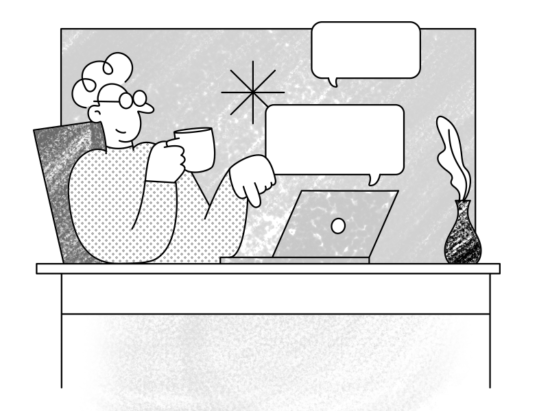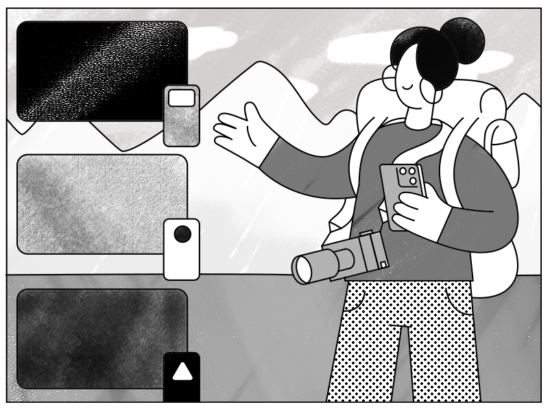Clickbait is garbage fire. And it’s also all our collective fault.
Media companies, news sites and basically the entire Internet have been reduced to clickbait titles like “19 flavoured mojitos you never knew you needed.” Hollow articles without any substance that exist only to show you ads on your journey to see that youtube clip of the chewbacca mom.
But the good people of the Internet are fighting back.
The rise of adblockers, metrics that ignore clicks and views, and the decline of visits to “classic” clickbait outlets all spell a story of recovery. Have we reached a peak in clickbait? Are clickbait titles and articles dying?
Yes: they’re dying a slow, horrible death
Digital publishing behemoths like Buzzfeed have built their empire on clickbait titles. Buzzfeed has amassed “only” $170m in profits in 2015, and is currently valued at $1.5bn. This was arguably the main incentive for other media outlets to hop on the clickbait train and transform their meaningful headlines into meaningless garbage.
All in the name of page views, which means more eyes on ads, which means more revenue.
But this revenue model is slowly being pushed out. Even Buzzfeed isn’t immune to the shift in people’s attention spans and the fact that they are getting better at smelling BS from miles away daily . Buzzfeed had to slash their expected revenue for 2016 in half:
“What may be more consequential than the size of BuzzFeed’s miss is the reason for BuzzFeed’s miss. One theory is that BuzzFeed’s core ad product — “native” stories it writes on behalf of marketers — no longer works as well. Another theory, favored by people who would like BuzzFeed to succeed, is that last year’s BuzzFeed’s content strategy moved faster than its monetization strategy. That is: Last year BuzzFeed started focusing on creating content for other people’s platforms — in particular, video that appears on Facebook — but hasn’t been able to make much money from that content, because those platforms are still figuring out their ad models.”
One old idea that’s becoming fashionable is evident in the success of The Wirecutter, a relatively small website that posts reviews on an eclectic collection of gadgets. When Brian Lam founded Wirecutter, he had no ads. Instead, he used special links to products he reviewed, which lead to Amazon. For every person who came from Wirecutter to purchase the reviewed product on Amazon, Lam gets a cut of the sale. For those of you not familiar with this process, it is called affiliate marketing.
With just a few dozen articles per month, Wirecutter drove $150m in 2015. “We move as much product as a place 10 times bigger than us in terms of audience,” Lam said in a Bloomberg Technology interview. “That’s because people trust us. We earn that trust by having such deeply-researched articles.”
The shift in mentality is in staggering contrast to the classic goals of clickbait articles and sponsored content.
Search Engine Optimisation – SEO – is the nail in clickbait’s coffin.
The higher up you are in search results, the more people will find you and – you guessed it – the more eyes you’ll get on your site, which means more revenue for you.
How do you get yourself up there within the top 1% of search results? Search Engine Optimisation. Now, there’s an entire shady industry behind SEO, but the easiest way to get optimised quickly is to write a lot of articles that reference your website. That way you’re signaling Google you’re a popular address on the internet, and this will push you up its results.You could even hire a talent-outsourcing company (and its legion of highly trained monkeys – no offence to the poor, unfortunate souls) to produce empty content for you.The only problem is that you’re making trash content. Empty shells of copy-pasted opinions that improve nothing, serve no one, and live on the Internet as future link rot.
Content writers are tasked with producing articles on strange, non-relevant and non-sensical topics like “Fashion trends for working parents” or “Iconic Actors and Islands Related to Them” just so they could remotely mention your website in the article. Anything below 750 words, or even 1000, is considered trash and will not be graced with high rankings by Google’s algorithms.
The Internet is drowning in 1000-worded articles on gibberish. All because Google’s web crawlers prefer that length over shorter articles.
As David Weiner of the Awl.com puts it:
Most longform is bad. The problem arises from the “long” part. If you need more than 600 words to say what you need to say you are trying too hard for accolades or you’re getting paid by the word. It is unfortunate that society conflates length with depth and quantity with complexity, but no one who signs the checks will agree to pay more for less. Any writer who tells you he cannot reduce his prose to a digestible number of sentences is lying because he’s afraid that if he does he’ll blow the whole scam for everyone else.
The end result is a systemic, machine-led approach to writing pointless, longform content that has no choice but to be slapped with clickbait titles so you’ll be tricked into viewing it. Because who in their right mind would want to read about clothes for working parents? What does that even mean?
But the golden age of clickbait – and hollow articles – is over. The very hand that fed the clickbait hysteria is killing it slowly.
People are becoming averse to this kind of deception, and they can smell the bullshit from miles away. Better yet, Google’s own AI just beat a human at the Chinese game of Go. It also started writing poetry. And soon it’ll come for bullshit articles, and be able to sniff them out and punish them with a burning passion.
It’s suddenly not too hard to imagine Google simply announcing the change to its algorithms in a quick blog post. A lot of written content will be downranked in search results. The content writing industry will scramble for a way to save itself in the aftermath of the bloodbath.
Fool me once, shame on you. Fool me twice, shame on me.
Most clickbait content online follows the same formulas and patterns. They are incredibly predictable. There’s no shame in following general guidelines – like Hollywood movies do with their act structures and narratives – but such content feels and reads the same as the other 99% of pointless writings online.
The formulaic approach to writing is coming to an end. Readers have become more resilient to clickbait and native advertising (or sponsored content).
Tony Haile is the CEO of Chartbeat, a company that measures and monetizes audience attention for content creators. In his lenghtly post on Time.com titled “What You Think You Know About the Web is Wrong” he lays out and debunks online publishing myths: “For quality publishers, valuing ads not simply on clicks but on the time and attention they accrue might just be the lifeline they’ve been looking for. Time is a rare scarce resource on the web and we spend more of our time with good content than with bad. Valuing advertising on time and attention means that publishers of great content can charge more for their ads than those who create link bait.”
The digital publishing platform Medium decided from the very start not to measure when people view articles — open the link to an article, see it’s trash, then close it immediately – but instead counts when people actually read the article – open the link, stay long enough on the website and read it. They call this metric the “Total Time Reading”.
Ev Williams, founder of Medium, wrote a lengthy post about this metric and why Medium is concerned more with making an impact on people’s minds than the number of clicks on an article.
“We pay more attention to time spent reading than number of visitors at Medium because, in a world of infinite content — where there are a million shiny attention-grabbing objects a touch away and notifications coming in constantly — it’s meaningful when someone is actually spending time. After all, for a currency to be valuable, it has to be scarce. And while the amount of attention people are willing to give to media and the Internet in general has skyrocketed — largely due to having a screen and connection with them everywhere — it eventually is finite.”
As the writer of this piece, I don’t really want your time — I want to make an impression on how you think. If my rhetorical skills let me do that in less time (for me and you), all the better.
At Medium, we don’t really want anyone’s time. We want to create a platform that enables people to make an impression on others. To make them think. To change their minds. To teach them something or connect emotionally. It’s hard to measure any of that.”
Buzzfeed has also changed the way it measures the success of its content. Dao Nguyen, a publisher and resident data scientist at Buzzfeed added:
“We can measure some kinds of impact, and we do it regularly for our advertisers, especially since they have clear objectives. But some kinds of impact are not quantifiable in the sense they you can’t say that one instance is larger than another. And trying to do so diminishes our ability to make a difference and connect with people.”
The obvious shift in the analytics trend is that content can provide, and should provide, more than the sum of its likes, shares, and views. People don’t read the articles they share, and even if they open them, they rarely read them through to the end. What about the content that actually gets the views and the reading time it deserves? Content that’s expertly written, does not push a product or a brand – or worse, a “personal” brand – to you directly but educates you? What separates the garbage content from the grey-area content?
It all comes down to trust.
And lots of it.
A game of trust.
Gary Vaynerchuk’s Snapchat account has been on fire lately. Or, rather, all the time.
Gary has been the loud hero of content marketing, promoting it as a tool for building trust with customers. “You’re in it for the long run, playing the long game,” he says in one of his videos. Open his Medium profile and voila: a sea of content ready to be consumed.
What sets Gary’s content apart from the majority of other clickbait is that Gary always tries to produce value – or so he claims. It is through this value, he argues, that customers will read and enjoy his work and in return, he’ll gain their trust.
The downside of this dogmatic approach to content is Gary’s flagship advice: PRODUCE. PRODUCE. PRODUCE.
Create an endless stream of content, always be publishing, and remain “in the game.” In one of his recent posts, he even suggests writing content that originated as video content that originated from another written content that was a reaction to a comment that was written on a piece of content that… you get the idea.
The pitfall of this approach is that it lessens the value of the content being produced. There’s a hard line between having enough experience to cover over 100+ posts, and writing repetitive hollow articles filled with advice and how-tos that have no value.
Some writers swear on their mother’s graves that clickbait titles still have life in them. They suggest using a clickbait title and using a funny spin on it. Say, “15 tricks IronMan can teach about better SEO” or “What Game of Thrones Can Teach Us About Ux”.
Spoiler alert: nothing. It’s a TV show.
The artisanal comedic genius who has thought of those headlines believes them to be a funny way to attract clicks. Maybe there’s some good material that makes you laugh a bit, too.
…you just don’t want to be there when the laughter stops.
And it stops the second you cease counting clicks, and start counting metrics that favor value like reading time, and how further down the article people scrolled. God forbid you take into account the immeasurable.
Where are we to gather?
Google is paying close attention to the quality of your articles (and will get even better at sorting the wheat from the chaff thanks to its AI, which by the way wrote its first lines of poetry the other day). Mix that with the fact that people are becoming better at spotting bullshit and you get the million dollar question: should we focus on making quality content?
Eric Schmidt famously wrote the line “Revenue Solves All Known Problems” on the wall of Google’s early offices. And it still rings true today. Even if you’re producing soulless articles that are a rehash of someone else’s ideas, so long as your company makes more money – you’ve won. That’s great for the short term, quarterly revenue.
But what are we to do when the money dries out?
We’ll do what the rest of the Internet has already done: close the tab and move on.



